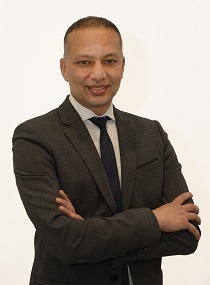
After a long period of uncertainty triggered by a worldwide pandemic, the 2022 European Society of Minimally Invasive Neurological Therapy (ESMINT) congress (7–9 September, Nice, France) will bring back its in-person offering and become a hybrid event next week. And, according to congress president and interventional neuroradiologist Mohamed Aggour, the programme will prioritise technologies and debates that are shaping the future of minimally invasive neurological therapies while also taking a look back at a milestone study from the field’s formative years.
“Our main message—and the motto for this year’s congress—is that ‘the future depends on what we do today’. This encompasses everything we have tried to do with the meeting, including the latest, emerging techniques; results from major research trials; new technologies and innovations and gathering many new ideas [together] in one place,” Aggour states.
“During the COVID-19 era, we have learned a lot about transmitting live and virtual participation—we have added remote access to this year’s event. We also have a partnership for translating all the sessions to Chinese [in real-time]. This will help in broadcasting our European experience and training to other parts of the world, and overcoming any barriers.”
Aggour notes that this will help ESMINT fulfil one of its key goals as a leading European society with an international scope. Another way the event organisers have attempted to make things more interactive is via the introduction of a smartphone application, which allows attendees—both onsite and virtual—to participate in panel discussions by submitting questions, or contribute to audience polling during certain presentations.
“And, for the first time, the ESMINT annual meeting will feature recorded cases,” Aggour continues. “These recorded procedures are of high educational value and, during the pandemic, recording and editing procedures became easier with the communication tools we have, so we made the call for certain new, emerging techniques to be demonstrated this year.”
In addition, Aggour notes the importance of continued collaboration with ESMINT’s partner societies—the Society for NeuroInterventional Surgery (SNIS), the European Association of Neurosurgical Societies (EANS) and the European Stroke Association (ESO)—via joint sessions, and thanks the faculty, delegates and industry partners for their support in advance of the event.
Programme highlights
The keynote lecture at ESMINT 2022 will focus on the 20-year anniversary of the ISAT study, which Aggour describes as a “pivotal point in establishing the practice in our field”, as it validated the endovascular treatment of cerebral aneurysms by demonstrating improved outcomes versus surgery.
Andrew Molyneux (University of Oxford, Oxford, UK), who was the lead author of this 2002 publication in The Lancet, will deliver a keynote lecture on ISAT on Wednesday 7 September. “Since then, our speciality has just boomed,” says Aggour. “A lot of physicians have got into practice in our field, structuring the healthcare service we provide. There have been a lot of innovations and new tools, and training really took off widely from there 20 years ago. I am very proud that we will be celebrating 20 years of ISAT, which transformed our speciality.”
Among other aspects of the programme highlighted by Aggour is the Stroke Development session, which will hear perspectives from Eastern Europe, the UK and other parts of the world where stroke care networks are somewhat underdeveloped, as well as featuring a roundtable discussion—involving practitioners and industry alike—on developing these networks in the future.
Meanwhile, ‘Morbimortality Corner’ is set to draw ESMINT 2022 to a close on Friday 9 September, and will first see physicians present ‘my worst memory’ of a procedure—in the hope this will aid their peers if they ever encounter similar challenges—before a session entitled ‘Better to be smart than lucky’ focuses on the need for operators to react quickly and think outside the box when faced with a complication they have never seen before.
New technologies
The three-day programme will also see the role of physicians and the importance of benchtop testing in research and development (R&D) debated. Aggour notes that robotics, artificial intelligence (AI), mixed reality and telecommunications, bioabsorbable intracranial stents and several other advances will all feature, as the medical field and industry attempt to brainstorm and “shape the future” of patient care.
Similarly, the ‘start-up alley’ at ESMINT 2022 is something Aggour was “very keen” to add to the programme, as the organisation looks to help smaller companies on their journey. “We have never had this way for start-ups to participate in a big meeting like this,” he notes. “So, we created the start-up alley. It gives those smaller [companies] an access to exhibition and a seven-minute presentation in the main programme. This will allow them to interact with our community, and open the [door] for them to present their brilliant, futuristic ideas.”
Among these innovative start-ups are Intradys, a French medical software company attempting to bring all the tools required by physicians into a single, next-generation ecosystem using mixed reality and machine learning, and Basecamp Vascular, which has developed an electronic, steerable guidewire for use in mechanical thrombectomy procedures. “Among other start-ups present, these are amazing ideas that I believe really are what we will be using in the very near future,” Aggour concludes.













